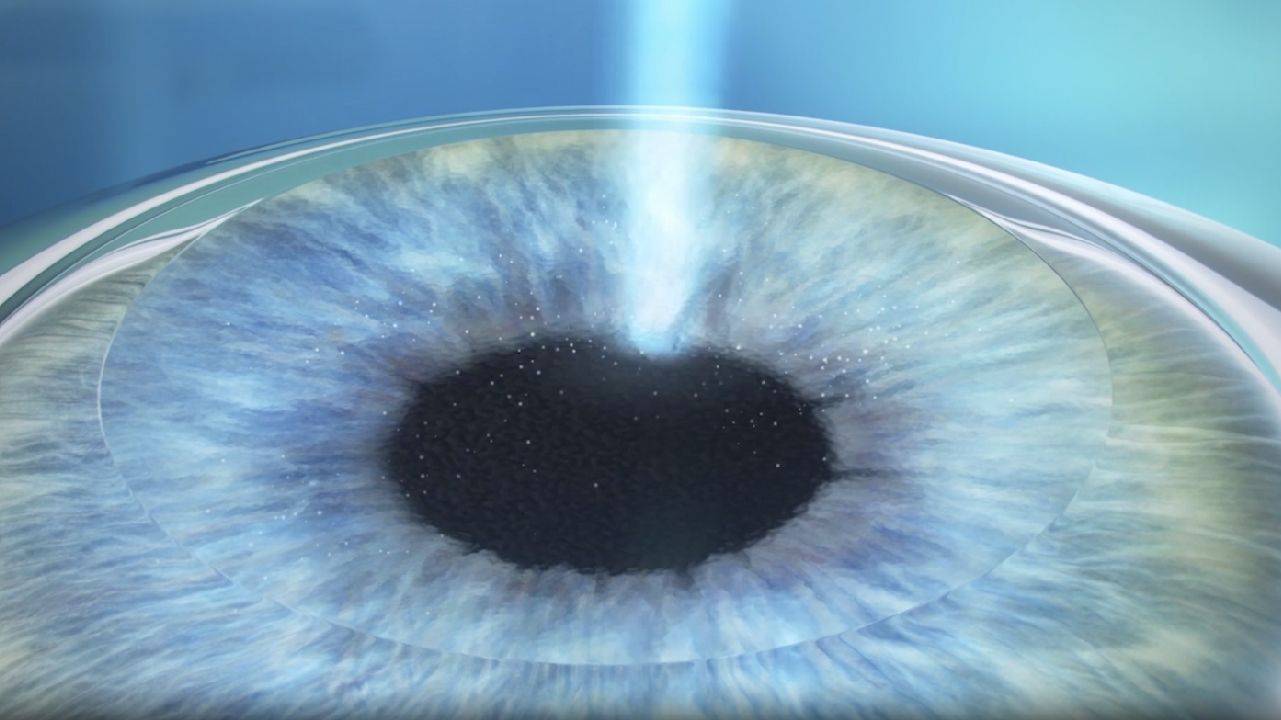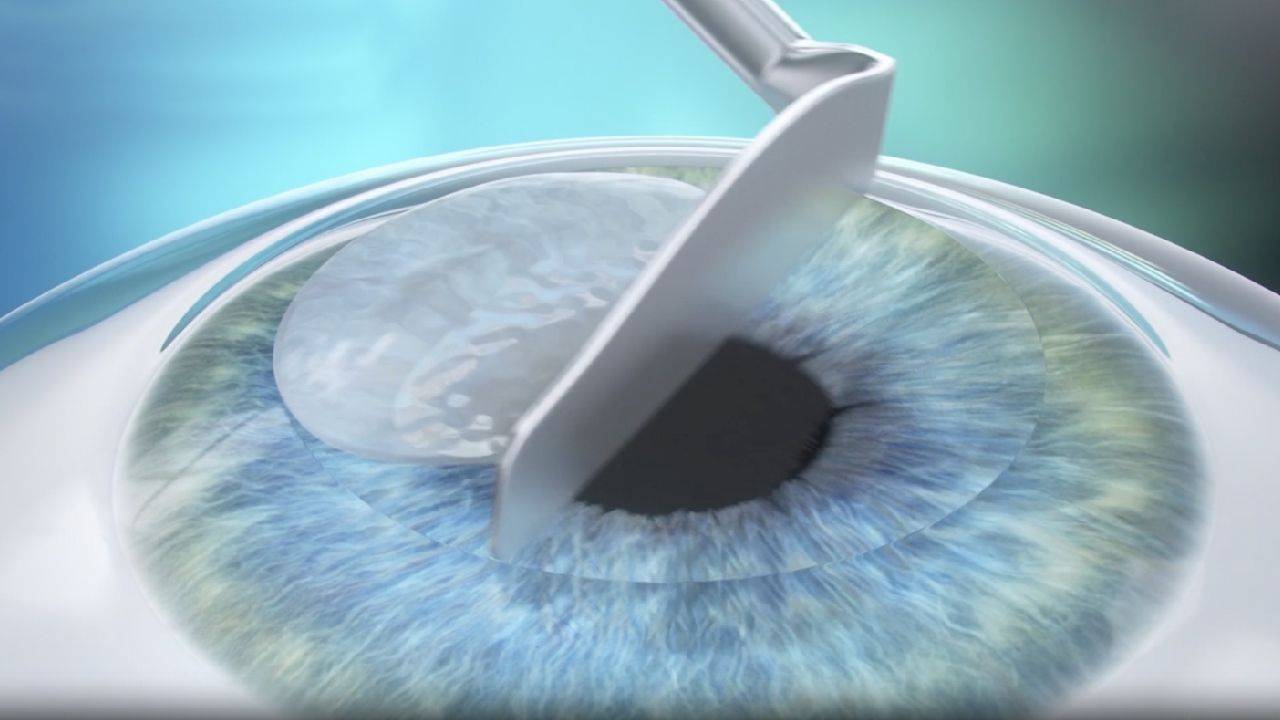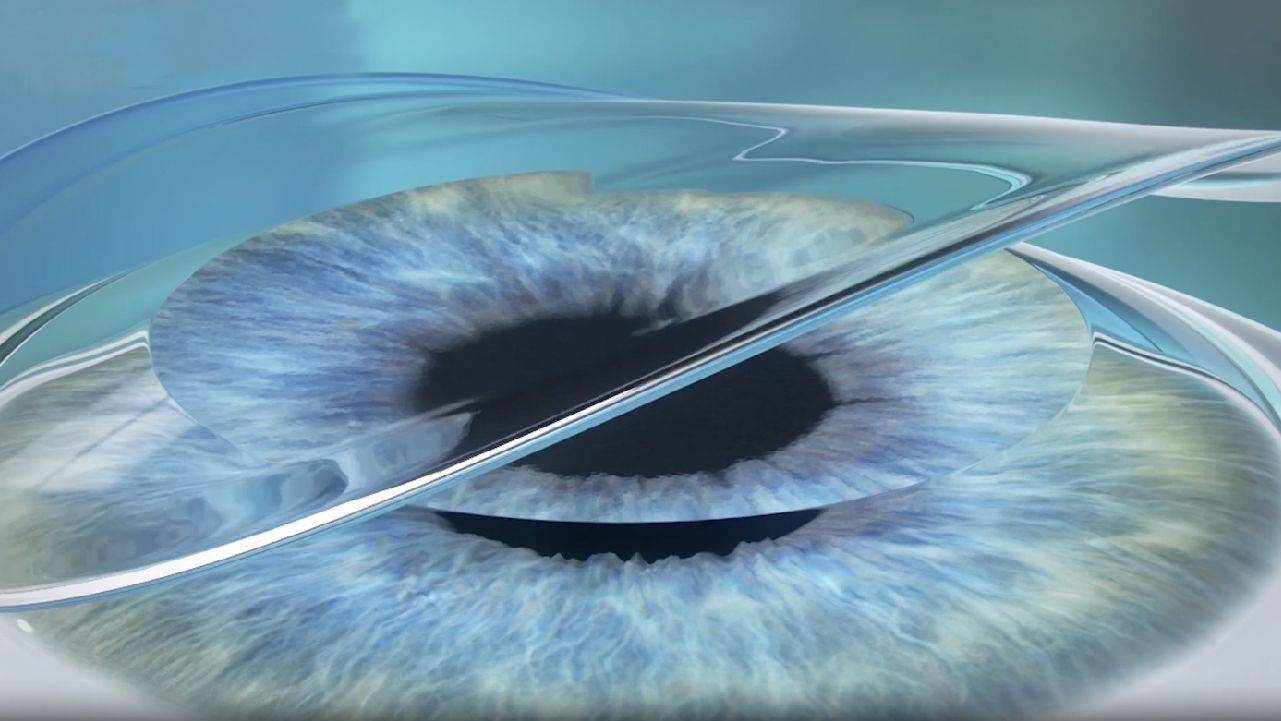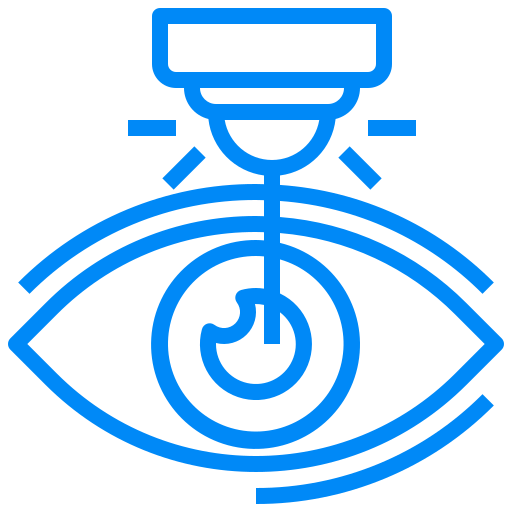PRK
LASER REFRACTIVE TREATMENTS
What is PRK?
Photorefractive Keratectomy (PRK) was the first FDA-approved laser vision correction procedure to enter the market. It has been used since 1995 to correct myopia (nearsightedness) hyperopia (farsightedness), and astigmatism.
In order to improve vision, PRK reshapes the cornea. This is done by first removing the surface cells, called epithelial cells. The curvature of the cornea is then precisely adjusted by applying a laser treatment to its surface. The corrected curvature of the cornea then allows light to come into focus accurately within the eye.
This LVC method is painless. Numbing eye drops are used to prevent any discomfort. The procedure takes under 15 minutes in total. The laser itself takes just 1–15 seconds.
How Does It Work?

Step 1: Dissolving the Surface Cells
Numbing eye drops are applied to dissolve the outermost surface epithelium cells.

Step 2: Removing the Surface Cells
The epithelium cells are removed, allowing the laser to access the cornea stroma tissue.

Step 3: Reshaping the Cornea
The laser goes on to reshape the cornea, thus correcting the refractive error in one seamless step.

Step 4: Bandage Contact Lens
A bandage contact lens with high oxygen permeability is then placed over the treated area to allow the surface cells to safely regenerate.











